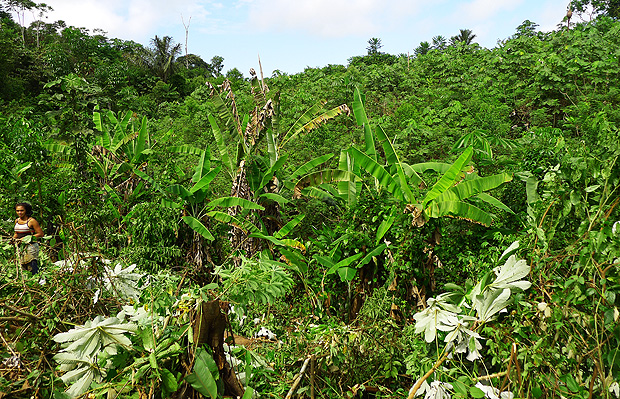Latest Photo Galleries
Brazilian Markets
12h03 Bovespa |
-0,14% | 129.028 |
16h43 Gold |
0,00% | 117 |
12h17 Dollar |
+0,39% | 5,0873 |
16h30 Euro |
+0,49% | 2,65250 |
ADVERTISING
Reforestation is best against global warming
02/04/2016 - 08h52
Advertising
REINALDO JOSÉ LOPES
COLLABORATION FOR FOLHA
In a newly released study, a group of international scientists revealed that Brazil's forests and the forests of other tropical countries in the Americas are much more durable than those with chainsaws ever dreamed.
In areas abandoned from deforestation and agricultural use, the forest usually bounces back with a vengeance, sucking CO2 (the main gas responsible for global warming) at a rate 11 times greater than that of a forest that hasn't been torn down.
| Frans Bongers | ||
 |
||
| The data evaluated came from 45 regions in the Americas, from Mexico to Bolivia. |
This is an excellent argument for the appreciation of what is known in Brazil as capoeira, or a forest in the automated reconstruction phase. To help in the efforts against climate change, a simple and cheap approach would be to allow these types of embryonic forests to regenerate naturally in degraded areas–beyond, of course, avoiding further deforestation.
The data evaluated came from 45 regions in the Americas, from Mexico to Bolivia, including several sites in Amazônia, the Atlantic Forest, and the Brazilian savanna.
After 20 years of growth, on average, the secondary forests (in other words, those that regenerate after deforestation) already achieved the high rates of carbonic gas absorption mentioned above (which amounts to 3 tons of carbon per hectare per year).
Only after 70 years of growth, however, will they reach a biomass equivalent to 90 percent of that of a primary forest.
"Up to now, those forests were kind of orphan, we lived a radical dichotomy between supposed virgin forests and degraded areas. Our work shows that we need to look at this issue more broadly", says Pedro Brancalion, a University of São Paulo in Piracicaba researcher who also backs the study.
Translated by SUGHEY RAMIREZ
Read the article in the original language



